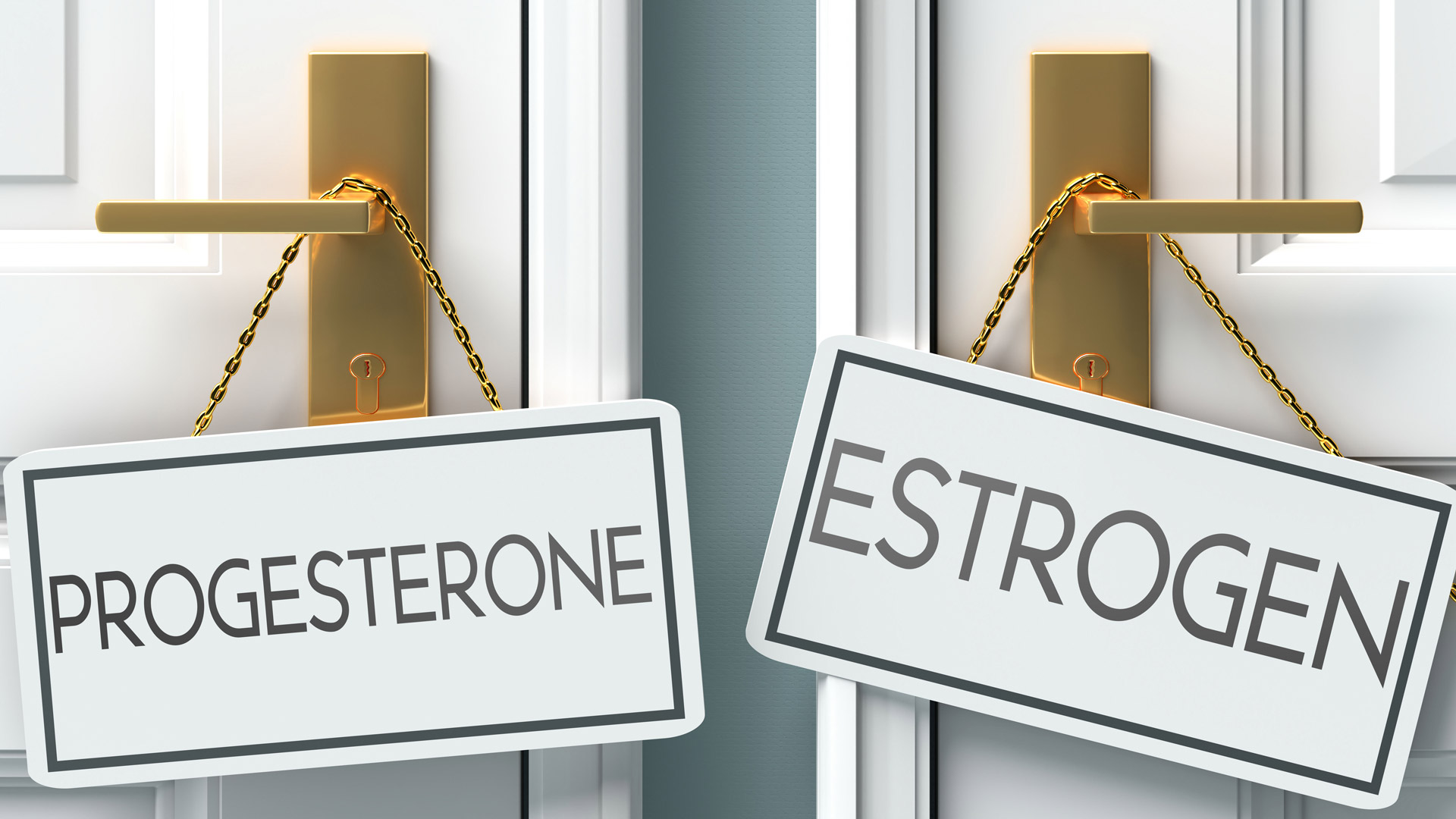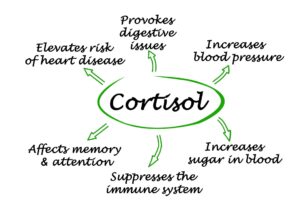
Symptoms of estrogen dominance in females seem to still be a mystery in many circles.
The term estrogen dominance was first termed by Dr. Ray Peat in the 60’s and made popular by Dr. John R. Lee in his series of books, “What your doctor may not tell you about….”
Estrogen was isolated in the 1930’s and by the middle of the century many of the toxic effects were known to researchers.
This substance was quickly labeled, “the female hormone” due to the treatment of “female problems.” It seemed to have magical properties because it could improve fertility but also acted as an oral contraceptive. It is now being aimed primarily at the post-reproductive population in managing issues such as hot flashes and unrelated aspects to femininity such as osteoporosis and sleep. It has now been rebranded as anti-aging drug.
With estrogen being labeled the female hormone, women, doctors and the general public were stuck with the belief that loss of femininity and even youthfulness was a result of lack of estrogen. This belief still exists today because of that indoctrination and an overall misunderstanding of the hormones.
Estrogen dominance
The research on the negatives of excess estrogen is plentiful.
“Estrogen is a very important factor, not merely an incidental one in cervical carcinogenesis.” Edgar Allen, 1941. That’s a significant statement coming from the man who discovered estrogen.
“Cancer, abnormal blood clotting, and infertility were known to be caused by estrogen before 1940, but at the same time the drug companies began calling estrogen “the female hormone,” and claiming that it would improve fertility.” Dr. Ray Peat
Around 1940 the potential money was too great to be ignored by big pharma. Drugs such as Premarin and Diethylstilbestrol (D.E.S.) were touted to prevent miscarriages and “restore femininity.” Millions of women were part of the experiment. Barbara Seamen covers the deceit, incompetence, and history of the estrogen industry in her phenomenal book.
In the 70’s studies on dogs showed estrogen was responsible for degenerative bone disease, kidney disease, liver disease, thyroid disease and more. Contraceptives for dogs resulted in cancer. The industry to no surprise stopped studies on dogs and shifted to humans.
Not until 2001 when the National Institute of Health and Women’s Health Initiative published their study on hormone replacement therapy (H.R.T) and specifically estrogen did the negative impact become publicly substantiated.
Unfortunately, H.R.T is not a prerequisite for estrogen dominance.
Albert Szent-Gyorgyi showed that estrogen excess prevents the increase of stroke blood volume as the speed increases. The hormone of progesterone counters by increasing the stroke volume as the heart accelerates. This allows the pumping to be more effective without unnecessary acceleration of the heart rate. These effects match Hans Selye’s observation that estrogen imitates the shock reaction.
Marian Diamond showed that prenatal progesterone enlarges the cortex of the fetus brain , and that estrogen makes it smaller. Leonell Strong showed that a treatment that lowered the estrogen function in a young mouse could produce cancer-free offspring for several generations.
Estrogen has been promoted for heart disease by increasing nitric oxide. It does indeed promote nitric oxide but nitric oxide is a toxic free radical and plays a role in degenerative disease.
With estrogen being labeled the female hormone, women, doctors and general public were stuck with the belief that loss of femininity and even youthfulness was a lack of estrogen. Unfortunately, the belief that estrogen is therapeutic and beneficial has a strong foot hold in today’s culture and parts of the medical field.
Causes of Estrogen Dominance
When the diet is low quality, estrogen will increase. Eating a vegetarian diet and living in a climate with less sun hours will make the situation worse. The polyunsaturated fats (pufas) predominantly found in cheap oils, nuts, seeds will have a thyroid inhibiting effect on the cells. These fats will be like throwing a mask over the cells trying to receive thyroid hormone. If there is over consumption of PUFA’s, a thyroid deficiency, excess body fat, excess physical and emotional stress, and poor elimination then estrogen will tend to climb. It’s extremely common to see thyroid problems and estrogen issues together. One of the functions of the thyroid is to help the liver inactivate the estrogen. If thyroid has slowed then estrogen will accumulate.
The main test the medical community uses to check estrogen levels is a blood test. However, any test would be better than no test. Usually estradiol E2 is the only estrogen tested. This can give a false reading when levels appear to be low because the tissues can still be saturated. There isn’t a test to check levels in the tissue so blood serum should be looked as a piece of the puzzle, not the whole puzzle.
Symptoms of estrogen dominance in females
Below is a list of symptoms that may show with estrogen dominance. Symptoms can range from mild to severe.
- 71 symptoms are listed but realistically you could triple it from the indirect influence of estrogen
- Decreased sex drive
- Abnormal menstrual periods
- Bloating (water retention)
- Breast swelling and tenderness
- Fibrocystic breasts
- Headaches (especially premenstrually)
- Mood swings (most often irritability and depression)
- Weight and/or fat gain (particularly around the abdomen and hips)
- Dry skin
- Acceleration of the aging process
- Allergies, including asthma, hives, rashes,
- Sinus congestion
- Autoimmune disorders such as lupus erythematosis and thyroiditis, and possibly Sjoegren’s disease
- Breast cancer
- Cervical dysplasia
- Depression with anxiety or agitation
- Dry eyes
- Early onset of menstruation
- Endometrial (uterine) cancer
- Fat gain, especially around the abdomen, hips and thighs
- Fatigue
- Tender breasts
- Foggy thinking
- Hair Loss
- Headaches
- Hypoglycemia
- Increased blood clotting (increasing risk of strokes)
- Infertility
- Insomnia
- Magnesium deficiency
- Memory loss
- Mood swings
- Osteoporosis
- Polycystic ovaries
- Premenopausal bone loss
- PMS
- Histamine production
- Sluggish metabolism
- Thyroid dysfunction mimicking hypothyroidism
- Hot flashes
- Uterine fibroids
- Weight gain
- Endometriosis
- Cold hands and feet
- Thyroid dysfunction
- Adrenal gland fatigue
- Thickened uterine lining
- Accelerated aging
- Magnesium loss
- Shock like effects
- Seizures
- Spider veins
- Age pigment
- Severe menstrual cramps
- Miscarriage
- Heavy periods with clotting
- Anxiety and panic attacks
- Joint and muscle pain
- Autoimmune disorder
- Estrogen related cancer
- Varicose veins
- Aneurysms
- Uticaria
- Regulation of testosterone
- Loss of muscle mass
- Brain function
- Skin health
- Sexual function/libido
- Cardiovascular function
- Cholesterol regulation
- Birth defects
Two main hurdles exist when it comes to understanding estrogen’s impact.
The first, is the belief estrogen is uniquely a female hormone and the hormone that defines and feminizes a woman. Estrogen is also present in men and very similar levels in older men to women. This attachment to all things female only serves to put estrogen in a positive light and one that big pharma relied on when first marketing.
The second hurdle, is when it come to testing. We as a society rely heavily on blood tests to give us the answer while possibly ignoring symptoms. A situation I’ve heard a number of times from women is the tests results are all in the ‘normal’ ranges even though they are exhibiting many symptoms. It wouldn’t be uncommon for that woman to leave a doctor’s office with an aniti-depressant prescription. Please remember, you are more than a bunch of numbers on a piece of paper.
The bloods tests for estrogen will not tell the whole story. Typically estradiol known as E2 is the only estrogen hormone tested. The body also produce estrone and estriol. Estrone is the hormone that tends to raise after menopause.
Estrogen does not decrease with age or when the ovaries are removed. This is a myth and leads to a misunderstanding of what is happening at the hormonal level. Every cell can produce estrogen and not just the ovaries. Most women continue to have hot flashes post hysterectomy.
Menopause occurs because estrogen raises and/or progesterone decreases. It is not a drop in estrogen.
The marketing will try to believe that ‘natural’ estrogens or ‘weak’ estrogens are better because the body produces them. That’s like saying a weak carcinogen will have some benefit. But these weak estrogens are the very hormones that have been identified with accelerated aging and many degenerative diseases.
We commonly think of the ovaries as the main source of estrogen. However, the enzyme (aromatase) which makes estrogen can be found in all parts of the body. Surprisingly, in rhesus monkeys, aromatase in the arms accounts for a very large part of estrogen production. Fat and the skin are major sources of estrogen, especially in older people. The activity of aromatase increases with aging, and under the influence of prolactin, cortisol, prostaglandins, and the pituitary hormones, FSH (follicle stimulating hormone) and growth hormone.
“In postmenopausal women, the tissue concentration of E2 was not significantly lower than in menstruating women in follicular phase.” Akerland
“Estrogen activates the adrenal stress reaction by way of the hypothalamus and pituitary, by direct actions on the adrenal glands, and by a variety of indirect effects, such as the increase of free fatty acids. It has both direct and indirect ways of promoting the formation of nitric oxide and carbon monoxide. These, and other estrogen-promoted factors which quickly and seriously interfere with mitochondrial respiration. Many of these effects contribute to increased intracellular calcium and free radical production, contributing to both the excitatory excess and an energy deficit” Ray Peat.
Taking this in account brings dementia, heart failure, autoimmunity, immunodeficiency and other diseases of aging together. It then shouldn’t be a surprise that 75% of autoimmune diseases occur in women.
Some hormones will increase with age while others decrease. Estrogen is one that will increase contrary to what you may hear or see on tests. The cells in our body depend heavily on oxygen and glucose (sugar). If they don’t get adequate supply they revert to a less efficient way of functioning or they die. Estrogen will steal oxygen from the cell (mitochondria) causing a shift in the pattern of growth and adaption. In other words causing cell growth such as tumors.
The anti-stress, antiestrogen approaches become fundamental to prevention of aging.
The pro-estrogenic nature of the unsaturated fatty acids is probably the biggest barrier to the radical elimination of degenerative diseases. Various saturated fatty acids, including butyric, octanoic, and palmitic, have protective effects on cellular functioning.
Progesterone is the basic brain-protective antiestrogen. It works to protect the brain at many levels (preventing lipid peroxidation, exitotoxicity, nitric oxide damage, energy deficit, edema, etc.) and it promotes repair and recovery.
Progesterone in most cases has effects opposite to estrogen. It improves mitochondrial energy production while preventing excessive excitation. Along with pregnenolone, progesterone is recognized as a neurosteroid with anti-excitotoxic actions, with the ability to promote repair and regenerate the nervous system.
“While progesterone is probably the most perfect antiestrogenic hormone, and therefore an anti-stress and anti-aging hormone, the recognition of a wide variety of estrogen’s effects has made it possible to adjust many things in our diet and environment to more perfectly oppose the estrogenic and age-accelerating influences.” Ray Peat
The work of the Biskinds in the 1940s showed that a dietary protein deficiency prevented the liver from detoxifying estrogen. Hypothyroidism prevents the liver from deactivating estrogen thus it increases the body’s retention of estrogen, which in turn impairs the thyroid gland’s ability to secrete thyroid hormone.
Estrogen’s effects on cells are immediate and profound, independent of the “estrogen receptors.”
Our bodies produce estrogen in a great variety of tissues, not just in the ovaries. Fat cells are a major source of it. The tendency to gain weight after puberty is one of the reasons that women’s estrogen levels rise with aging throughout the reproductive years.
The medical answer sometimes is to prescribe an estrogen to suppress symptoms like hot flashes. Synthetic progesterone like Provera or Mirena are progestins. These can give short term results by slowing metabolism more but the risk shouldn’t outweigh the reward. It will not have the same positive effect as natural or bioidentical progesterone.
Searching online you’ll find that a couple of popular protocols from doctors and support groups recommend DIM. (Diindolylmethane) and calcium glucarate. DIM is derived from cruciferous vegetables and a quick google search will show these can be goitrogenic (slowing thyroid). Seeing that the thyroid and estrogen have an intimate relationship it may not be best choice. Calcium from dairy would be the optimal choice but if you are taking a calcium supplement take calcium carbonate instead.
Strategies for lowering estrogen:
- Adequate protein intake. At least 100 grams per day
- Progesterone. Not the synthetic version. This should be called the female hormone.
- Optimal elimination. Moving the freight everyday.
- Optimal thyroid functioning. TSH under 2.00 plus checking RT3 and T4. Body temps, pulse and symptoms should also be monitored
- Vitamin E supplementing
- Reducing body fat.
- Minimizing xenoestrogens like body creams, soy beans, pufas, plastics
- Minimize raw veggies. Hard to digest foods plus the cruciferous veggies which are goitrogenic and can slow thyroid functioning.
Aging should be defined as an energy problem.
Interference with the energy supply quickly causes cells to die.
Hearing that excess estrogen is problematic is not always greeted with open arms. I’ve included plenty of information below that you can investigate further or share with your doctor or practitioner. I have witnessed so many females who are frustrated with their health and can’t get answers. I’ll be posting soon about how to lower levels in an upcoming post.
It’s your body. It’s your health. You are not broken. It can be improved.
Please share with someone you think could benefit with this information.
Further reading for inquisitive minds:
- Characterization of reproductive hormonal dynamics
- Hot Flashes, Energy and Aging
- Aging, Estrogen and Progesterone
- Natural Estrogens
- Estrogen and Osteoporosis
- Tissue bound estrogen in aging
- Estrogen and brain aging in men and women; depression,energy and stress
- Estriol, DES,DDT




